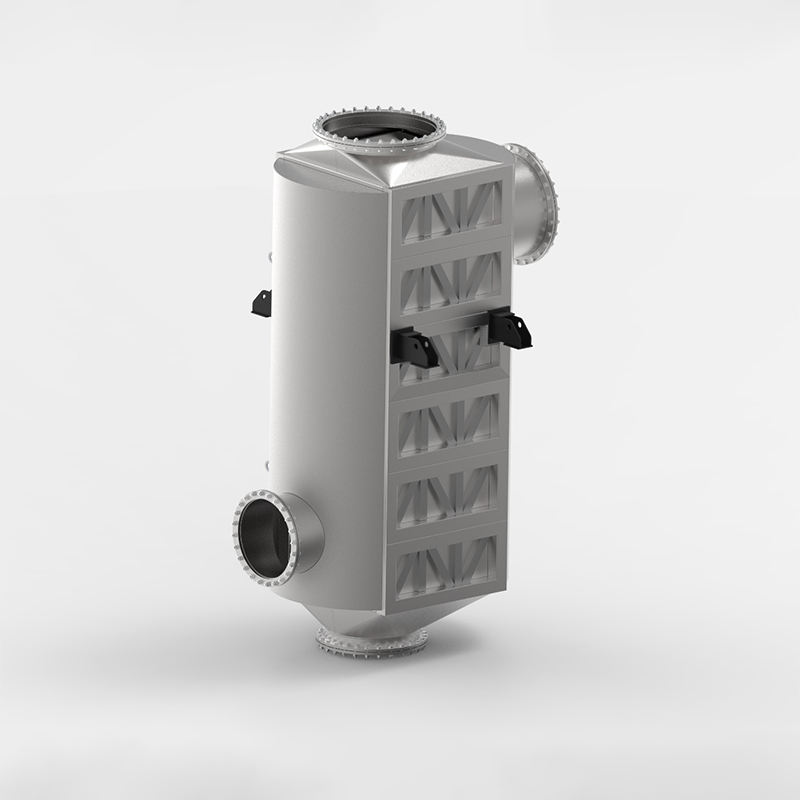5 key roles of plate heat exchanger gaskets.
Plate heat exchanger gaskets perform 5 key roles: ...
More
A gas-to-gas heat exchanger is a specialized device designed to transfer thermal energy between two gas streams without allowing them to mix. These systems are critical in industries such as power generation, chemical processing, and HVAC, where efficient heat recovery or temperature regulation is essential. By leveraging advanced materials like stainless steel or ceramics, these exchangers handle high temperatures and corrosive gases, ensuring durability and performance. Their design can vary, including shell-and-tube, plate, or regenerative configurations, tailored to specific operational needs.
Gas-to-gas heat exchangers are pivotal for energy conservation, reducing operational costs by recovering waste heat from exhaust gases to preheat incoming air or process gases. For instance, in power plants, they can improve efficiency by up to 10%, significantly cutting fuel consumption. Industries also use them to meet environmental regulations by minimizing emissions through optimized combustion. Their versatility extends to aerospace and manufacturing, where precise temperature control is vital. With global demand rising due to energy efficiency mandates, these exchangers are becoming indispensable in sustainable industrial practices.
Gas-to-gas heat exchangers operate on the principle of thermal conduction and convection, transferring heat from a hot gas stream to a cooler one through a solid barrier. The process begins as the hot gas flows through one side of the exchanger, while the cooler gas passes on the opposite side, separated by a heat-conductive wall. The temperature gradient drives heat transfer, with efficiency influenced by factors like surface area, flow rates, and material conductivity. Designs such as plate heat exchangers maximize surface contact, while regenerative types alternate gas flows to store and release heat cyclically.
In practical applications, these systems often incorporate fins or turbulators to enhance heat transfer by disrupting laminar flow and increasing turbulence. For example, in a recuperative heat exchanger, exhaust gases at 600°C can preheat combustion air to 300°C, boosting furnace efficiency by 20%. Computational fluid dynamics (CFD) modeling optimizes performance, ensuring minimal pressure drop and fouling. Real-world data shows that modern gas-to-gas exchangers achieve thermal efficiencies exceeding 85%, making them a cornerstone of industrial energy recovery systems. Their reliability and adaptability continue to drive adoption across sectors, from petrochemicals to food processing.
Select the most popular foreign trade service products to meet your diverse needs
Learn more about the dynamics and professional knowledge of the foreign trade industry

Plate heat exchanger gaskets perform 5 key roles: ...
More
A gasket in heat exchanger seals surfaces, blocks ...
More
You can see clear differences between welded block...
MoreAPI 662 defines standards for plate heat exchanger...
More.jpg)
Plate air preheaters transform industrial processe...
More
Regenerative solutions, such as the Plate Air Preh...
MoreSelect the most popular foreign trade service products to meet your diverse needs
Explore more content related to foreign trade services

User Comments
Service Experience Sharing from Real Customers
John Smith
Mechanical EngineerThe gas to gas heat exchanger is incredibly efficient and has significantly improved our plant's thermal recovery process. Highly recommended!
Emily Johnson
Process EngineerThis heat exchanger performs well under high-pressure conditions. The build quality is excellent, though installation required some adjustments.
David Brown
HVAC SpecialistOutstanding product! The gas to gas heat exchanger reduced energy costs by 20% in our facility. Perfect for industrial applications.
Sarah Lee
Plant ManagerReliable and durable. The heat exchanger integrates seamlessly with our existing systems. Minor delays in delivery, but worth the wait.